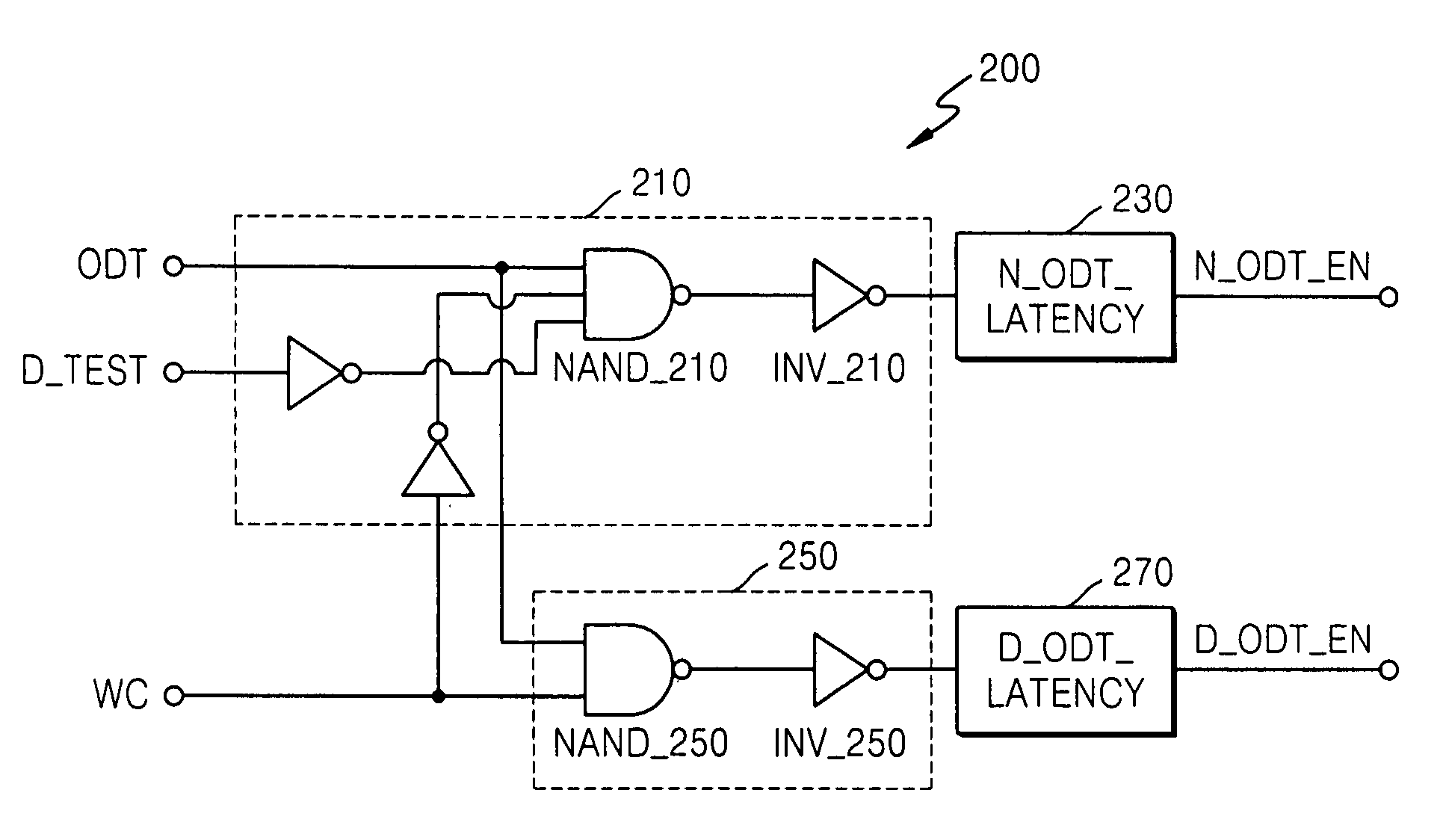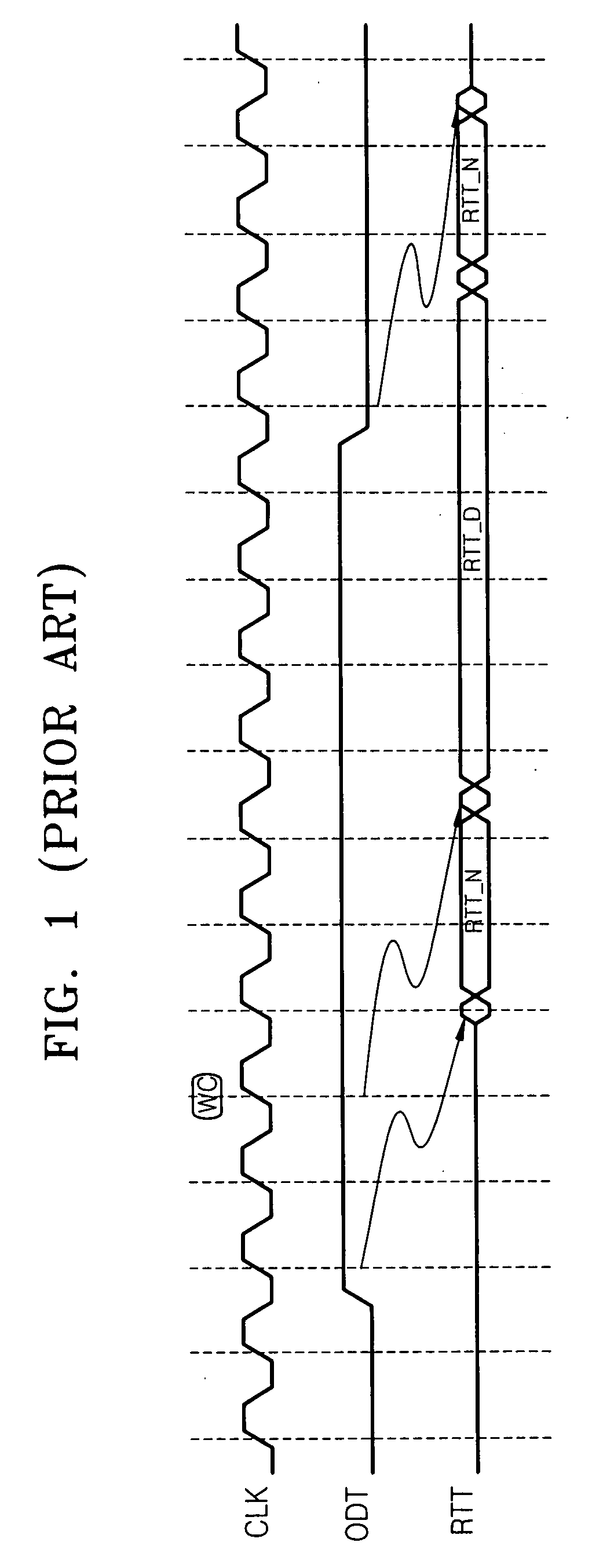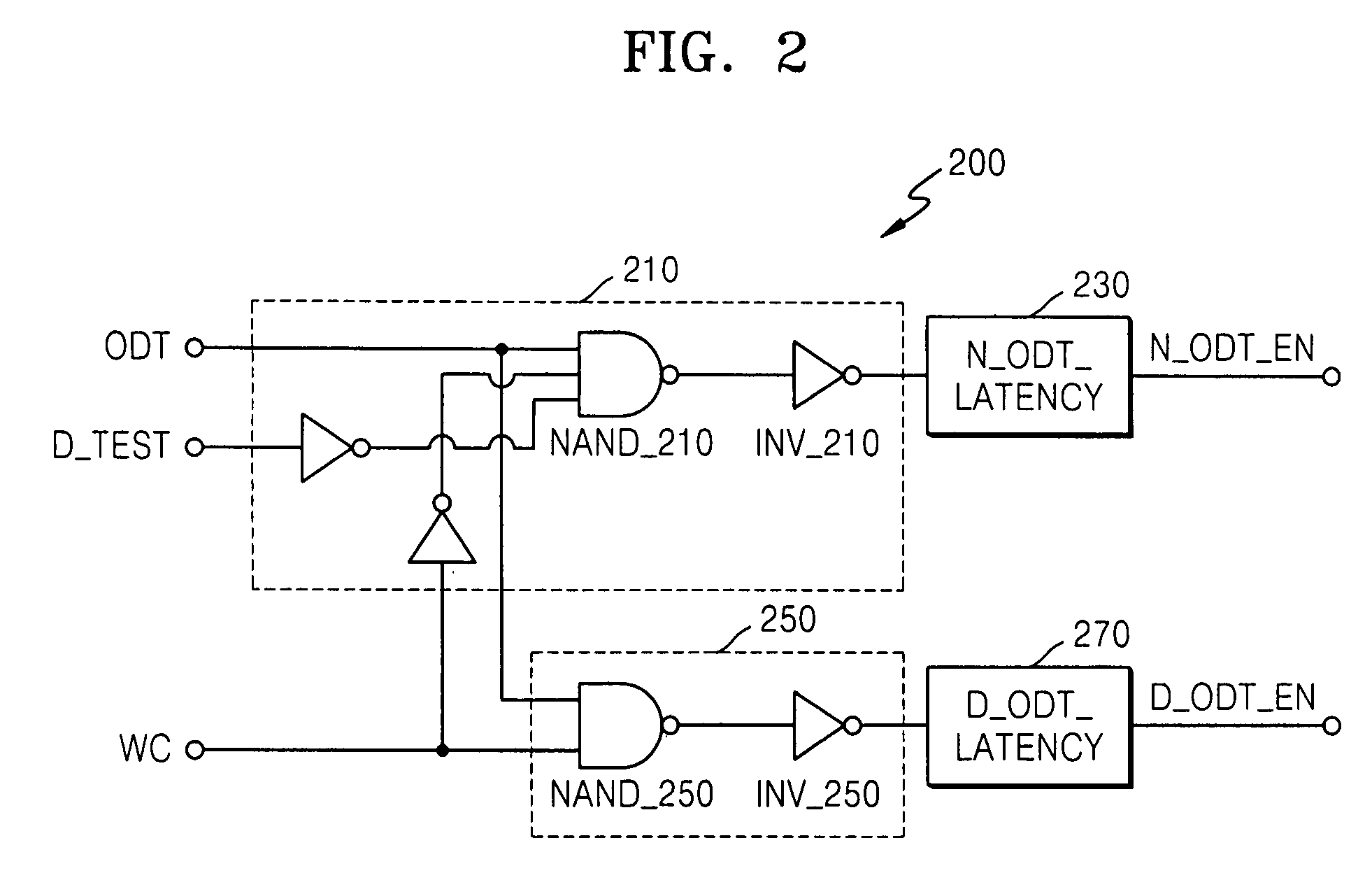Apparatus and method for determining on die termination modes in memory device
a technology of memory devices and termination modes, applied in the direction of pulse techniques, digital storage, reliability increasing modifications, etc., can solve the problems of difficult verification of the enablement of dynamic odt mode, signal reflection more significantly degrades si in memory systems having high-speed operations, etc., and achieves the effect of more flexibility
- Summary
- Abstract
- Description
- Claims
- Application Information
AI Technical Summary
Benefits of technology
Problems solved by technology
Method used
Image
Examples
Embodiment Construction
[0033]The present invention will now be described more fully hereinafter with reference to the accompanying drawings, in which preferred embodiments of the invention are shown. This invention may, however, be embodied in many different forms and should not be construed as being limited to the embodiments set forth herein. Rather, these embodiments are provided so that this disclosure will be thorough and complete, and will fully convey the scope of the invention to one skilled in the art.
[0034]FIG. 2 is a block diagram of an on die termination (ODT) mode test apparatus 200 according to an embodiment of the present invention. Referring to FIG. 2, the ODT mode test apparatus 200 includes a first mode determining unit 210, a normal ODT latency unit N_ODT_LATENCY 230, a second mode determining unit 250, and a dynamic ODT latency unit D_ODT_LATENCY 270.
[0035]The first mode determining unit 210 determines whether or not a normal ODT mode is enabled in response to a dynamic ODT mode test s...
PUM
 Login to View More
Login to View More Abstract
Description
Claims
Application Information
 Login to View More
Login to View More - R&D
- Intellectual Property
- Life Sciences
- Materials
- Tech Scout
- Unparalleled Data Quality
- Higher Quality Content
- 60% Fewer Hallucinations
Browse by: Latest US Patents, China's latest patents, Technical Efficacy Thesaurus, Application Domain, Technology Topic, Popular Technical Reports.
© 2025 PatSnap. All rights reserved.Legal|Privacy policy|Modern Slavery Act Transparency Statement|Sitemap|About US| Contact US: help@patsnap.com



